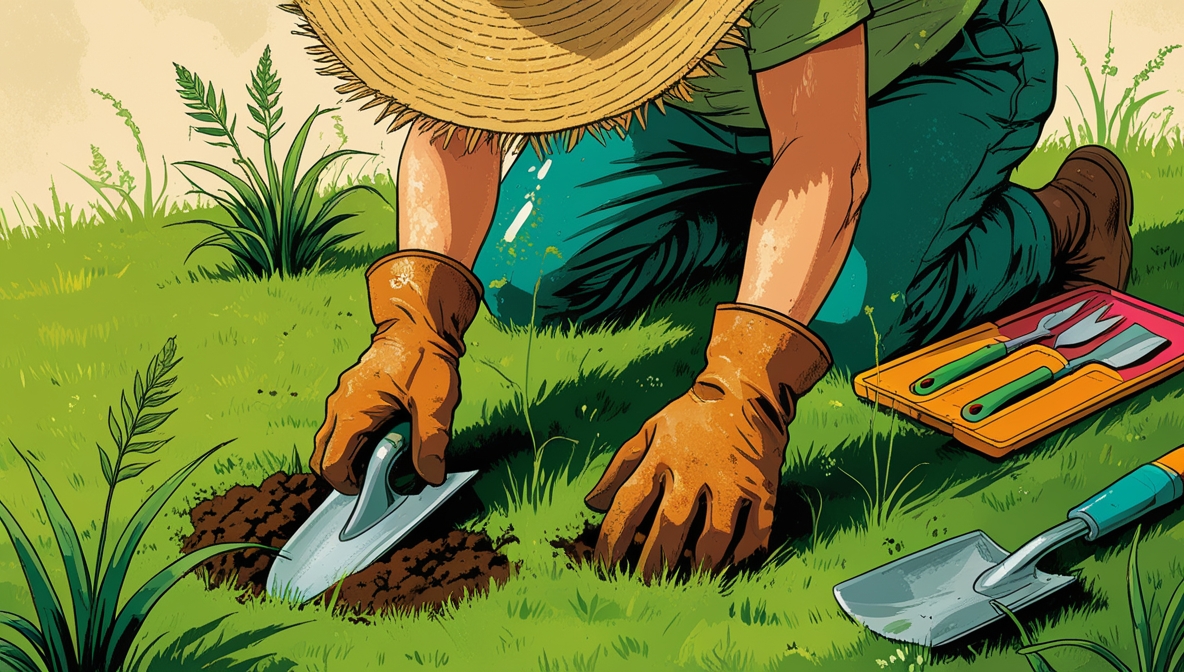Nutsedge grass, that pesky, aggressive weed, can quickly take over your lawn or garden. Its distinctive triangular tubers and persistent growth make it a real pain to get rid of. This article will explore the best ways to tackle this unwelcome intruder, from powerful chemical solutions to more DIY-friendly approaches. We’ll also look at how to prevent nutsedge from returning to your beloved green spaces.
Contents
NUTSEDGE: THE ENEMY
Nutsedge, also known as nutgrass, isn’t your average lawn weed. It’s a persistent, aggressive perennial that forms underground tubers, allowing it to regrow even after seemingly being eradicated. These tubers act like tiny, hidden armies, ready to sprout new plants at the slightest opportunity. Its triangular shape and tendency to form dense clumps make it instantly recognizable and extremely frustrating to remove. This underground network makes traditional lawn care methods often ineffective.
This tenacious weed isn’t just a lawn problem; it can infiltrate flowerbeds, vegetable patches, and even driveways. Its deep root system allows it to thrive in various conditions, making it a tough opponent. Knowing its nature is the first step to successfully combating its spread.
KILLING NUTSEDGE: METHODS
Several methods exist to tackle nutsedge, ranging from simple to more involved approaches. Chemical herbicides are often effective at killing the visible plants but can be harmful to other plants if not used correctly. These are generally the quickest and most reliable method for complete eradication. However, careful consideration of the surrounding environment is key.
Physical removal, like digging up the tubers, is a viable option for smaller infestations but can be time-consuming and doesn’t always eliminate the entire root system. It’s crucial to remove all visible tubers and any sign of the grass’s roots to prevent regrowth. Failure to remove the entire underground network can lead to a resurgence of the pest.
DIY NUTSEDGE SOLUTIONS
For those looking for gentler methods, there are a few DIY approaches to consider. Boiling water poured directly onto the nutsedge plants can kill the visible portion, but this won’t address the tubers. It’s best used as a supplemental method alongside other techniques. You can also try a vinegar spray or a mixture of water, dish soap, and salt. Always test these solutions on a small area first to ensure they don’t damage surrounding plants.
Using a hoe or digging tool to remove visible clumps and tubers is another good option for smaller areas. Be sure to remove all visible portions of the weed to prevent future growth. Repeated applications over time are often necessary to completely eliminate the root system.
PREVENTING NUTSEDGE RETURN
Preventing nutsedge return is crucial for maintaining a healthy lawn or garden. Good lawn care practices like regular mowing and fertilization can help. Maintaining consistent moisture levels and ensuring proper drainage can deter its growth. Thorough cleanup after removing nutsedge is essential. Properly dispose of any infected soil or plant debris to prevent unintentional spreading.
Monitoring your lawn for any signs of nutsedge growth is a key preventive measure. Early detection allows for quicker and more effective treatment, reducing the impact of the weed on your garden. This helps you address the issue before it becomes a widespread problem.
Nutsedge can be a persistent foe, but with the right knowledge and strategy, you can effectively manage and even eliminate it. Remember to choose the methods that best suit your situation and your gardening goals. Consistent vigilance and proper follow-up are crucial to keeping nutsedge at bay and preserving your beautiful, weed-free landscape.






